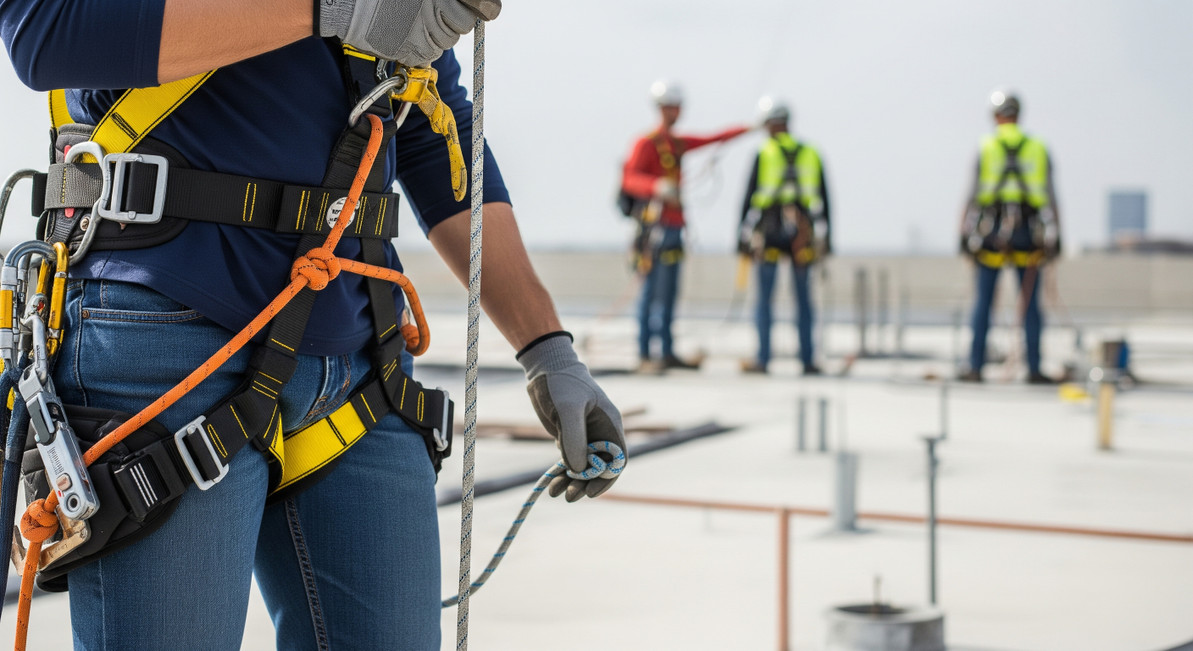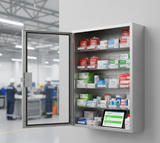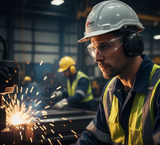Taking the High Ground: Essential Fall Protection Strategies for a Safer Workplace
Falls are consistently one of the leading causes of serious injuries and fatalities in the workplace, particularly in industries like construction, manufacturing, and maintenance. Whether it's a fall from a ladder, scaffolding, a roof, or even a raised platform, the consequences can be devastating. That's why, at Your Safety Company, we emphasize that taking the high ground in safety means implementing essential fall protection strategies.
Preventing falls isn't just about compliance; it's about safeguarding lives and ensuring every worker returns home safely at the end of the day. A robust fall protection program is a cornerstone of any effective workplace safety plan.
The Gravity of the Situation: Why Falls Are So Dangerous
Falls from even relatively low heights can result in severe injuries, including broken bones, head trauma, spinal cord damage, and internal injuries. From greater heights, they are often fatal. OSHA (Occupational Safety and Health Administration) consistently lists falls as one of the "Fatal Four" leading causes of construction fatalities, but they are a risk in many other sectors too.
The good news is that nearly all falls are preventable with proper planning, equipment, and training.
Building a Fortress: Key Elements of a Fall Protection Program
An effective fall protection program goes beyond just handing out harnesses. It's a comprehensive approach that includes:
-
Hazard Identification and Assessment:
-
Identify all areas where workers are exposed to fall hazards (e.g., unprotected edges, holes, leading edges, elevated work surfaces).
-
Determine the height of the fall hazard (OSHA generally requires fall protection at 4 feet in general industry, 6 feet in construction, and any height over dangerous equipment).
-
Assess the type of work being performed and the environment.
-
-
Hierarchy of Controls:
-
Always prioritize fall prevention using the hierarchy of controls:
-
Elimination: Can the hazard be eliminated (e.g., pre-fabricate components on the ground)?
-
Substitution: Can a safer method be used (e.g., aerial lift instead of scaffolding)?
-
Engineering Controls: Can the hazard be engineered out (e.g., guardrails, safety nets)?
-
Administrative Controls: Can procedures or training reduce the risk (e.g., warning lines, designated safety zones)?
-
Personal Protective Equipment (PPE): Fall protection systems like harnesses and lanyards are the last line of defense.
-
-
-
Proper Equipment Selection:
-
Choose the right fall protection system for the specific task and hazard.
-
Ensure all equipment is compliant with relevant ANSI/OSHA standards (e.g., ANSI Z359 series for fall protection).
-
-
Training:
-
All workers exposed to fall hazards must be thoroughly trained on recognizing hazards, using fall protection equipment correctly, inspection procedures, and rescue plans.
-
-
Inspection and Maintenance:
-
Regular inspection of all fall protection equipment (before each use by the user, and periodically by a competent person).
-
Proper storage and maintenance to ensure equipment remains in safe working condition.
-
-
Rescue Plan:
-
A clear, practiced plan for rescuing a worker who has fallen and is suspended in a harness. Prolonged suspension can lead to suspension trauma, a serious medical emergency.
-
Your Fall Protection Arsenal: Types of Systems
Different fall protection systems serve different purposes:
-
Fall Arrest Systems:
-
Purpose: To safely stop a worker's fall after it has occurred.
-
Components: Typically include an anchorage point, a full-body harness, and a connecting device (e.g., shock-absorbing lanyard, self-retracting lifeline).
-
Key Principle: Limits the fall distance and the force exerted on the worker's body.
-
-
Fall Restraint Systems:
-
Purpose: To prevent a worker from reaching a fall hazard.
-
Components: Usually involves a harness or body belt connected to an anchorage point with a lanyard that is too short to allow the worker to get to the edge.
-
Key Principle: Eliminates the possibility of a fall occurring in the first place.
-
-
Positioning Systems:
-
Purpose: To hold a worker in place while allowing them to use both hands for a task.
-
Components: Often a body belt or harness with a positioning lanyard connected to an anchorage.
-
Key Principle: Designed for hands-free work, but not for fall arrest. A separate fall arrest system is often required.
-
-
Guardrail Systems:
-
Purpose: An engineering control that provides a physical barrier to prevent falls.
-
Components: Top rail, mid-rail, and toe board.
-
Key Principle: Passive protection that doesn't require active engagement from the worker. Highly preferred when feasible.
-
-
Safety Net Systems:
-
Purpose: To catch falling workers or debris.
-
Best For: Situations where other fall protection methods are impractical or would create greater hazards.
-
Your Safety Company: Equipping You for the High Ground
At Your Safety Company, we are committed to helping you understand the specific fall hazards in your workplace and providing the right solutions to protect your team.
Don't let gravity be your greatest risk. Invest in effective fall protection today and ensure your workforce can always take the high ground safely.
Recent Posts
-
Beyond the Big Box: Why Yoursafetycompany.com is the Smarter Choice for Your First-Aid Program
When it comes to workplace first aid, ensuring your business is compliant and your employees are pro …1st Jan 2026 -
The 2026 Safety Checklist: Is Your Crew Truly Protected?
As we move into the new year, it’s the perfect time to look past the daily grind and evaluate the ge …23rd Dec 2025 -
Beyond the Buzz: Why Proper Hearing Protection is Non-Negotiable on Your Job Site
On any given workday, the sounds of progress—drills, saws, heavy machinery, and even loud conversati …22nd Dec 2025



